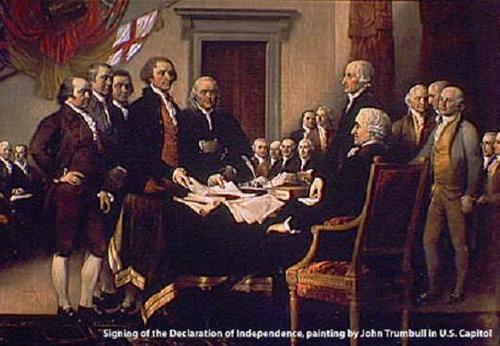plasma mythology, the task of plasma politics is not to explain
how civil society arose from generally peaceful individuals with
unalienable rights but to explain how it evolved from global
trauma and capricious violence.

Oct 27, 2008
Plasma Politics
from thunderbolts.com...continues
https://thunderbolts.info/tpod/2008/arch08/081027politics.htm
The flood of new data during the space age has also
inundated astronomers with surprises.
New instruments have
acquired images and measurements that traditional theories about
gravity and gas didn’t expect. The data hasn’t “made sense”
until exceptions or additions or revisions have been made to the
theories.
But insights into
the behavior of plasma have made sense of the data—without
modifications. A new field of study has arisen:
Plasma Cosmology is a part of the world’s largest
professional organization, the Institute of Electrical and
Electronic Engineers (IEEE)
In a similar manner,
the data of ancient art, artifacts, and narratives (myths and
legends) haven’t made sense in any comprehensive way. The
familiar ideas of common natural events, social structures, or
shamanic hallucinations have provided scant intellectual
satisfaction in explaining individual myths and designs.
But the obvious
similarities of themes around the world in different and
independent societies have gone begging to be accounted for.
Again, the data hasn’t made sense, insights into the behavior of
plasma have made sense of the data. “Making sense” is not
“proving” the hypothesis. Hard and ongoing work of
testing—against further data and alternative hypotheses—is still
required.
One researcher, Rens
van der Sluijs, has proposed that this application of plasma
principles to ancient historical data be called
Plasma Mythology. As happened with plasma cosmology, plasma
mythology turns accepted explanations on their heads:
Durkheim's and
Dumézil’s assertion that many myths reflect aspects of human
society are on target, although they were not inspired by those
aspects, but acted as models for them. Jung’s archetypes and
Lévi-Strauss’ binary structure exist and operate in the mind as
suggested, but were the imprint rather than the origin of the
myths.
The implications of
this new awareness of plasma touch almost every traditional
field of study with the promise (or threat, depending on one’s
appetite for adventure) of revolution. For example, imagine a
new field of Plasma Politics.
Traditional
theorists such as Rousseau and Locke have sought the origins of
civil society in a “state of nature,” envisioned as present
conditions from which social and governmental aspects are
excised. (For a more modern overview of this idea, see Part I of
Robert Nozick’s Anarchy, State, and Utopia.) Individuals
band together for trade and protection.
In response to the
different efficiencies and expediencies of the individuals’
various attempts to do this, certain patterns of order will
emerge as dominant. Locke and Rousseau attributed that order (of
civil society) to a “compact or “contract”
among the members of the society, prompting a number of
individuals to ask to see the original document with their
signatures on it.
But after Adam
Smith—and more modern theorists such as Ludwig von Mises in
economics and Stuart Kauffman in biology—the idea of emergent
order in complex systems (Smith called it an “invisible hand”)
provides a more useful understanding than attributing order to a
mysterious “intentional design.”
Plasma politics, to
stretch Thomas Paine’s contention, puts it “in our power to
begin the world over again.” The original state of plasma nature
was quite different from the presumed
present-state-sans-society: It was a nature engulfed in a global
thunderstorm of god-like intensity.
The social and
political orders that arose from this original cataclysmic state
did not emerge by way of invisible hands but in
compulsive-obsessive commemoration of fists that smote the Earth
and humanity haphazardly. Trade with and protection from other
humans were secondary.
After the gods and
their thunderstorm went away, people were left to trade and to
defend themselves in a context of memorials and rituals that no
longer had justification. The institutions of civil society
would not emerge as entirely rational responses to a reasonable
nature but as “guilt-ridden and fear-driven” quasi-rational
responses to an unreasonable, absurd nature.
In the shadow of
plasma mythology, the task of plasma politics is not to explain
how civil society arose from generally peaceful individuals with
unalienable rights but to explain how it evolved from global
trauma and capricious violence.
By Mel Acheson
______________
introducing 'plasma mythology'
Beginning with some of the classical philosophers,
scholars have pondered the nature and origin of mythology for centuries. Yet while the disciplines of geology,
astronomy or biology gradually accrued a theoretical
bedrock on which an entire edifice of thought could
subsequently be built, no similar consensus core was
ever reached for the subject of mythology. Mythopedia’s
concern is to establish a theoretical foundation,
consisting primarily of peer-reviewed articles and books,
on which a future discipline of comparative mythology
can be constructed.
A decade’s research suggests that, as a guideline,
whatever induced our distant ancestors to produce the
central themes of myth had to be:
| (1) | external to the human mind in origin, |
| (2) | cosmic, often celestial, in nature, and |
| (3) | attractive in character, both because it was |
| (3a) | rare or unusual in terms of frequency and |
| (3b) | awe-inspiring and frightening in terms of appearance. |
These three key points, in unison as in isolation,
serve as a watershed setting the present approach apart
from most preceding theories of myth.
In a 21st-century
revival of catastrophism, it is argued that the
most credible hypothesis for ‘mythogenesis’
invokes extraordinary and extremely impressive transient
and cosmic events observed by human beings and often
taking place in the sky. Conspicuous candidates for
such extraordinary events are the following:
continues.........https://www.mythopedia.info/intro.html.


